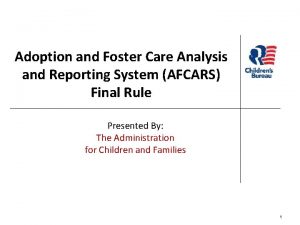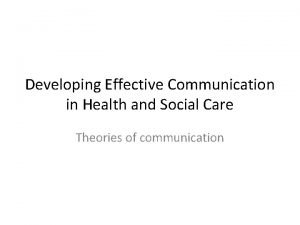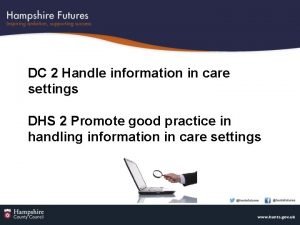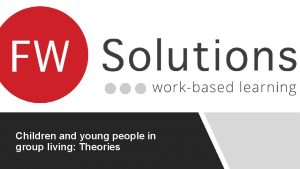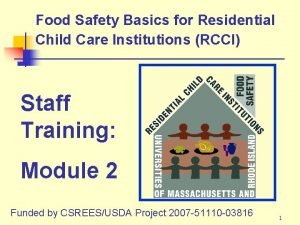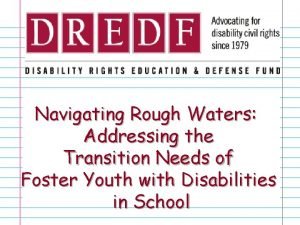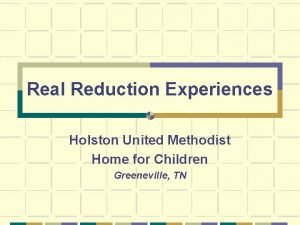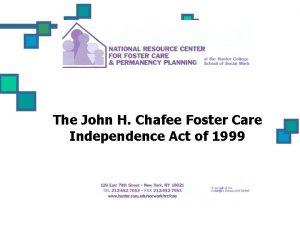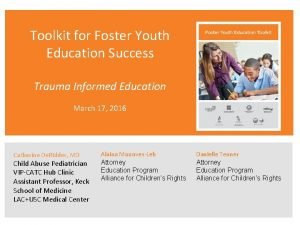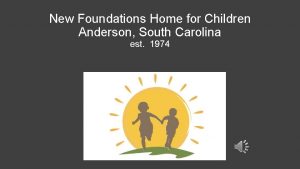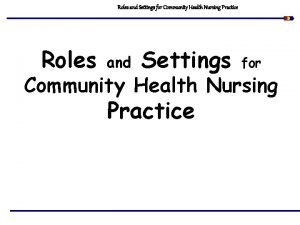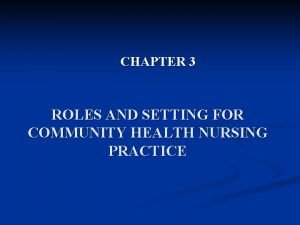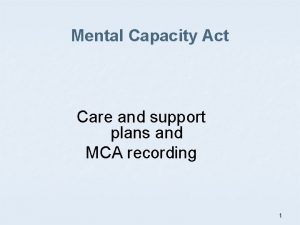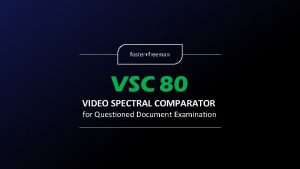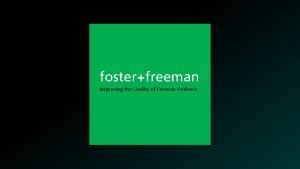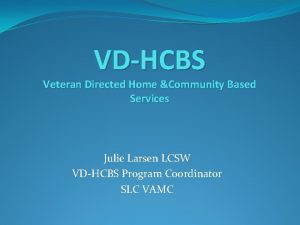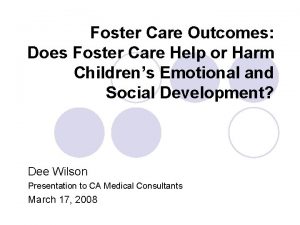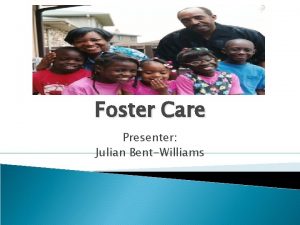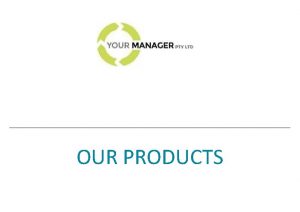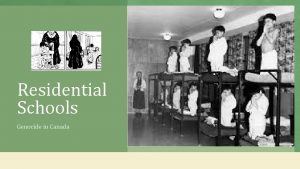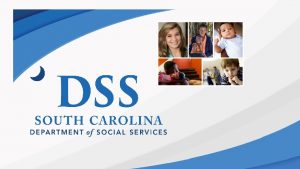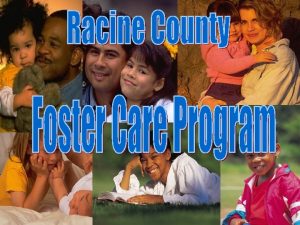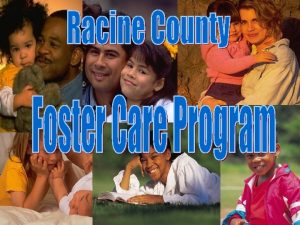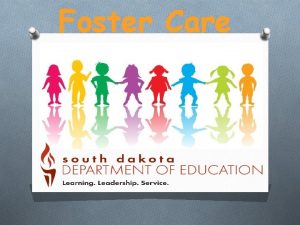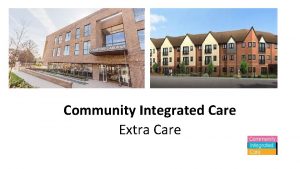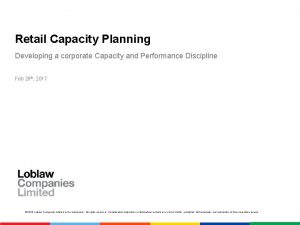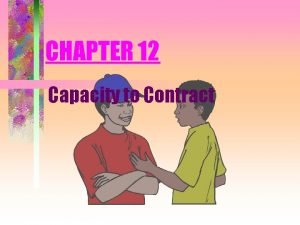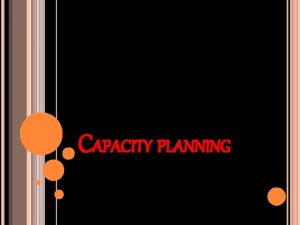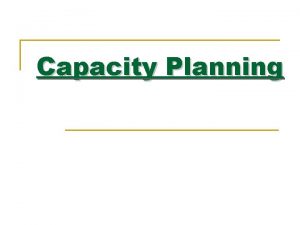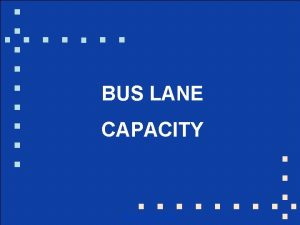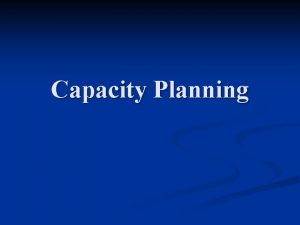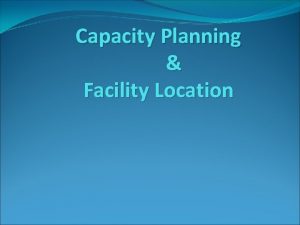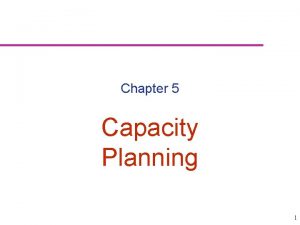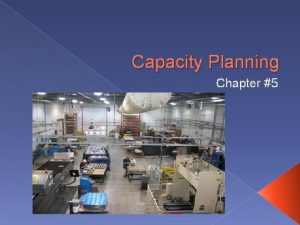Corporate Foster Care and Community Residential Settings Capacity
























- Slides: 24

Corporate Foster Care and Community Residential Settings Capacity Management ARRM Conference November 18, 2015 Nan Stubenvoll Residential Fiscal Policy Planner DHS Disability Services Division

Introduction • Background • Influences today • Process currently being used • Questions

DHS Mission and Values Mission The Minnesota Department of Human Services, working with many others, helps people meet their basic needs so they can live in dignity and achieve their highest potential.

DHS Mission and Values (continued) Values • We focus on people, not programs. • We provide ladders up and safety nets for the people we serve. • We work in partnership with others: we cannot do it alone. • We are accountable for results to the people we serve and all Minnesotans.

DHS Mission and Values (continued) • DHS practices these shared values in an ethical environment where integrity, trustworthiness, responsibility, respect, diversity, justice, fairness and caring are of paramount importance.

DHS Mission and Values (continued) Guiding goals - provide smart care that keeps people healthy and in their homes • People have access to affordable health care • Children and vulnerable adults are safe and protected • People are fed and healthy • People are safely supported in their homes & community • People with disabilities have choices

DHS Mission and Values (continued) Guiding Goals • Fewer babies are exposed to alcohol or drugs before birth • Fewer teens are using synthetic drugs • More people are planning for long-term care • Primary care, behavioral health and LTC are integrated • Children with autism have access to early intervention • At-risk and homeless youth have access to services • DHS staff are committed to fulfilling the agency’s mission

Corporate Foster Care Moratorium - 2009 The 2009 Minnesota Legislature authorized a moratorium on growth of corporate foster care and community residential settings for adults and children In 2011, legislation followed establishing a statewide capacity reduction of settings; the state met the deadline of June 30, 2014

Corporate Foster Care Moratorium (continued) DSD is required to monitor, with the assistance of DHS Licensing, the statewide capacity of corporate foster care and community residential settings for both adults and children; the total licensed beds allowable are 13, 700 There are five moratorium exceptions in legislation: MN Statute 245 A. 03 Subd 7 (a)

Needs Determination Annual Report Minnesota Statute 245 A. 03, Subd 7 (e) requires the commissioner to conduct a resource needs determination process for corporate foster care and community residential settings defined as licensed foster care or community residential settings where the license holder does not reside. These settings typically use a shift-staff model of support. The statute requires the commissioner to annually report to the legislature on the following:

Needs Determination Report (continued) • Information and data on the overall capacity of licensed long -term care services; • Actions taken to manage statewide long-term care services and supports resources; and, • Any recommendations for change to the legislative committees with jurisdiction over the health and human services budget

Needs Determination Survey Housing-related Gaps in Service - August 2015 Respite care needed including out-of-home, in-home, crisis, evening and weekend options Need for more housing options Services in foster care and community residential settings – and not outside their own counties Geographic location of providers or distance to services

Needs Determination Report (continued) For more information see Long Term Services and Supports Report – August 2015, pg 28 Note the charts showing geographic distribution – counties higher than population, lower than their population, etc.

How the MN Olmstead Plan and HCBS Rule influences our work Although the HCBS Rule and Minnesota’s Olmstead Plan have been developed separately, the goals and strategies of each are aligned Minnesota’s Olmstead Plan applies to everyone with disabilities, while the HCBS Rule applies only to people receiving HCBS services

How the MN Olmstead Plan and HCBS Rule influences our work (continued) • Both the Olmstead Plan and the HCBS Rule focus on adding new opportunities for people to existing options, while the HCBS Rule also focuses on assuring current services and settings align with the rule requirements

How the MN Olmstead Plan and HCBS Rule influences our work (continued) Both the HCBS Rule and the Olmstead Plan are working toward making sure people with disabilities have the opportunity to: • • Make meaningful choices Live more independently Engage in productive employment Participate in community life

Legislation Where we are in the process for this session Management of corporate foster care and community residential settings Working on additional exceptions Change in language regarding clarity for Commissioner’s Authority

Local Planning Grants The purpose is to plan on a local level for system change that will provide individuals with alternatives to congregate living 2013 – 2015: Metro (4), Stearns and Washington counties 2015 – 2017: Brown, Blue Earth and Nicollet counties added • Grantees are identifying and creatively developing solutions that will encourage individuals to live and receive services in their communities in the most integrated settings

Local Planning Grants (continued) They are ensuring that support plans are developed with the individual at the center, and with the individual’s strengths, desires, and goals driving the plan They are developing living arrangements for individuals who have chosen to leave a foster care or community residential setting in order to live elsewhere in the community

Local Planning Grants (continued) Grantees are changing internal processes and practices that often lead to a more restrictive, less integrated setting for individuals to such that encourage greater choice, increased independence, and deeper community integration

The Current Process– DHS Form 6021

DHS 6021 Form (continued) Available on DHS website as an e-doc Filled out by county moratorium liaison as a recommended request Use of the Voluntary Closure Rate section New section to be added for Change of Premise

DHS 6021 Form (continued) New section to be added for Change of Ownership Once received, DHS staff review If approved, DHS sends back to the county moratorium liaison Then sent on to Licensing w/ other paperwork to start the licensing process

Questions CBSM page on the DHS public website http: //www. dhs. state. mn. us/dhs 16_147271 -Includes DHS Form 6021 -List of County Moratorium Liaisons -Summary of process Nan. Stubenvoll@state. mn. us
 Foster care analysis reporting system
Foster care analysis reporting system Communication groups
Communication groups Handling information in health and social care
Handling information in health and social care Summarise theories about group living
Summarise theories about group living Complex food preparation
Complex food preparation Effects of multiple placements in foster care
Effects of multiple placements in foster care Effects of multiple placements in foster care
Effects of multiple placements in foster care Holston homes foster care
Holston homes foster care Chafee foster care program
Chafee foster care program Trauma informed care for foster youth
Trauma informed care for foster youth New foundations foster care
New foundations foster care Design capacity and effective capacity examples
Design capacity and effective capacity examples Objectives of corporate governance
Objectives of corporate governance Responsibilities of a community health nurse
Responsibilities of a community health nurse Community settings main roles
Community settings main roles Main roles of community setting
Main roles of community setting Primary secondary tertiary care nursing
Primary secondary tertiary care nursing Mental capacity care plan
Mental capacity care plan Before and after residential schools
Before and after residential schools Video spectral comparator (vsc)
Video spectral comparator (vsc) Foster freeman
Foster freeman Foster and maintain business relationships
Foster and maintain business relationships Veterans directed home and community based care
Veterans directed home and community based care Veterans directed home and community based care
Veterans directed home and community based care Table settings etiquette and presentation
Table settings etiquette and presentation
